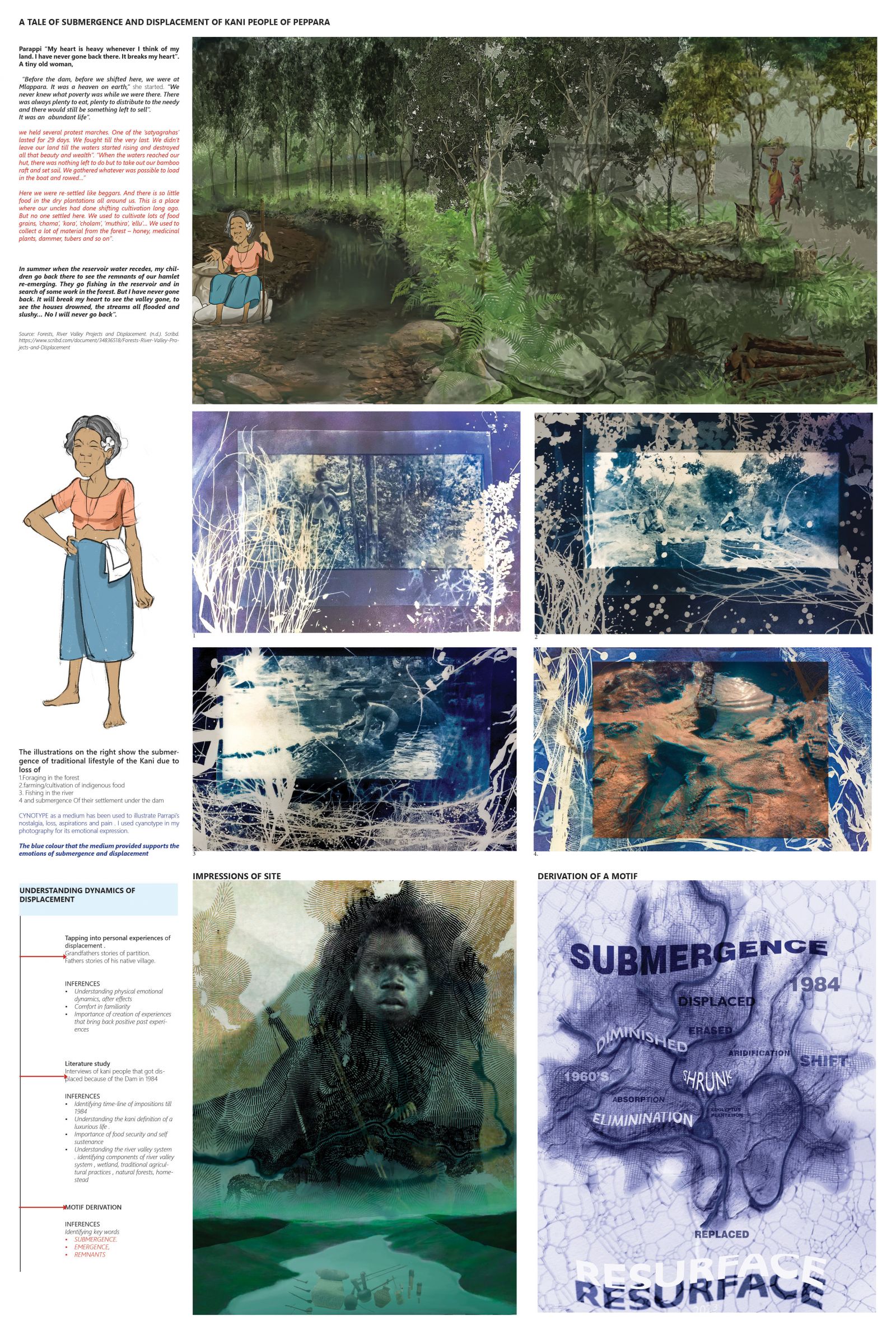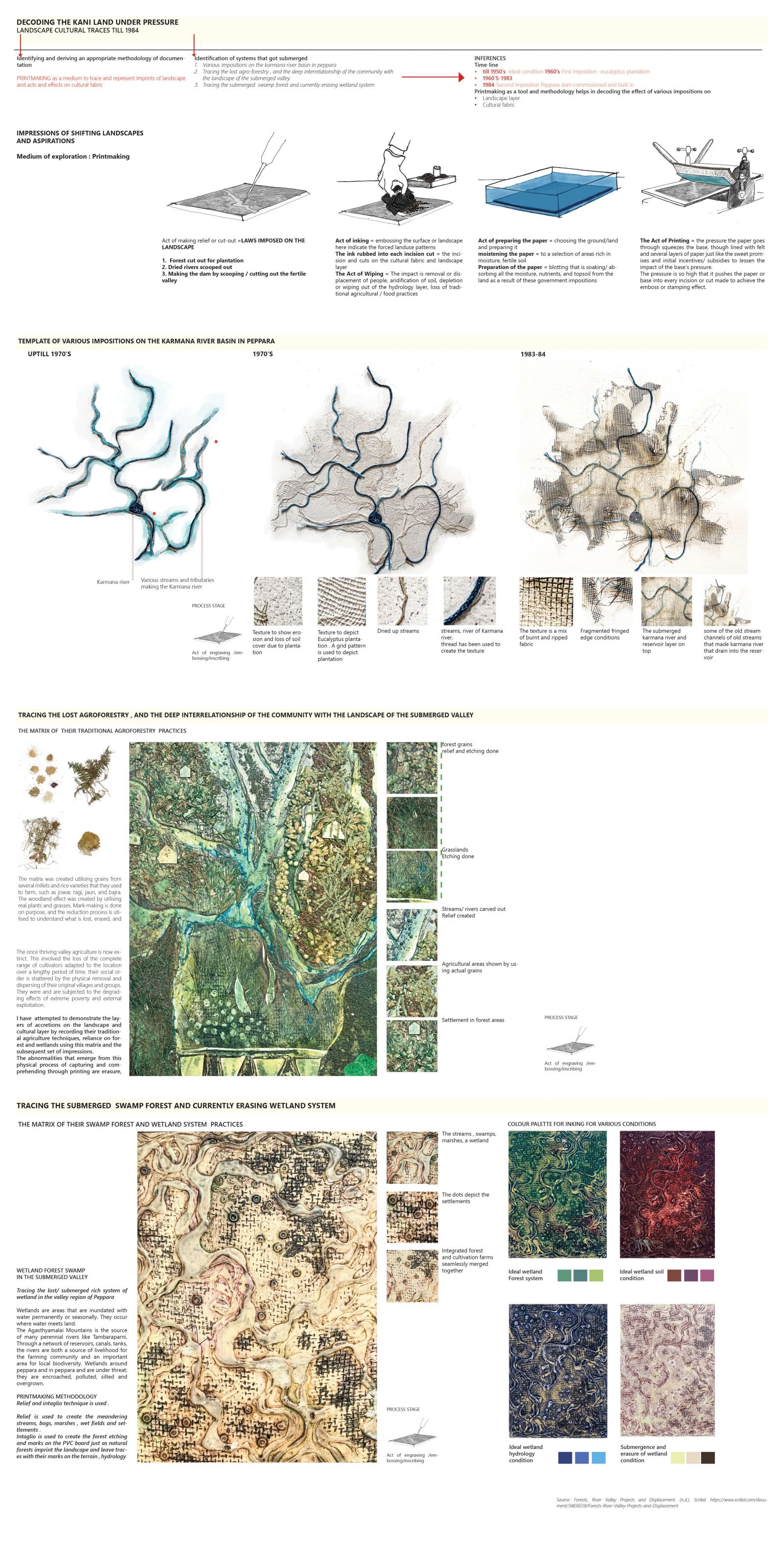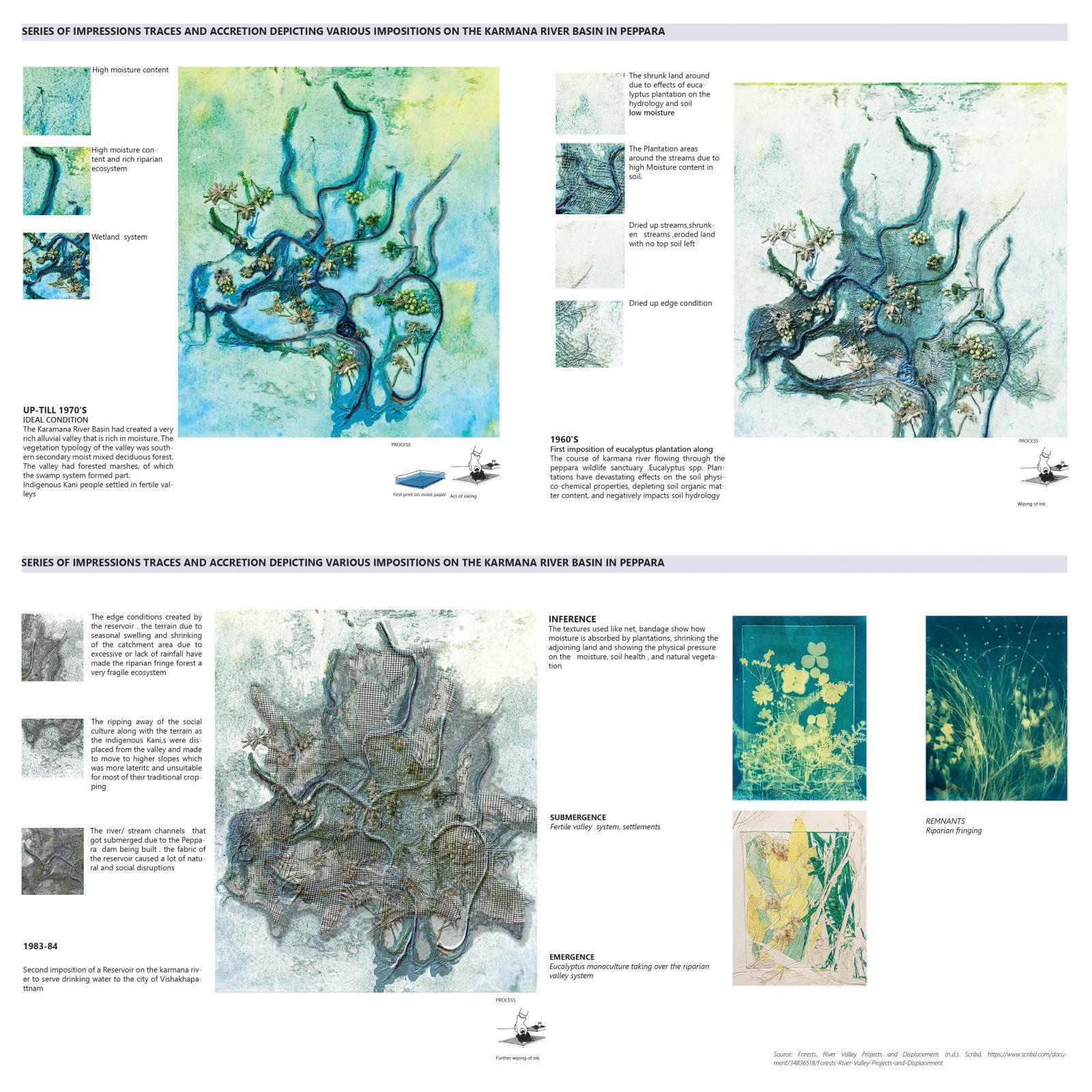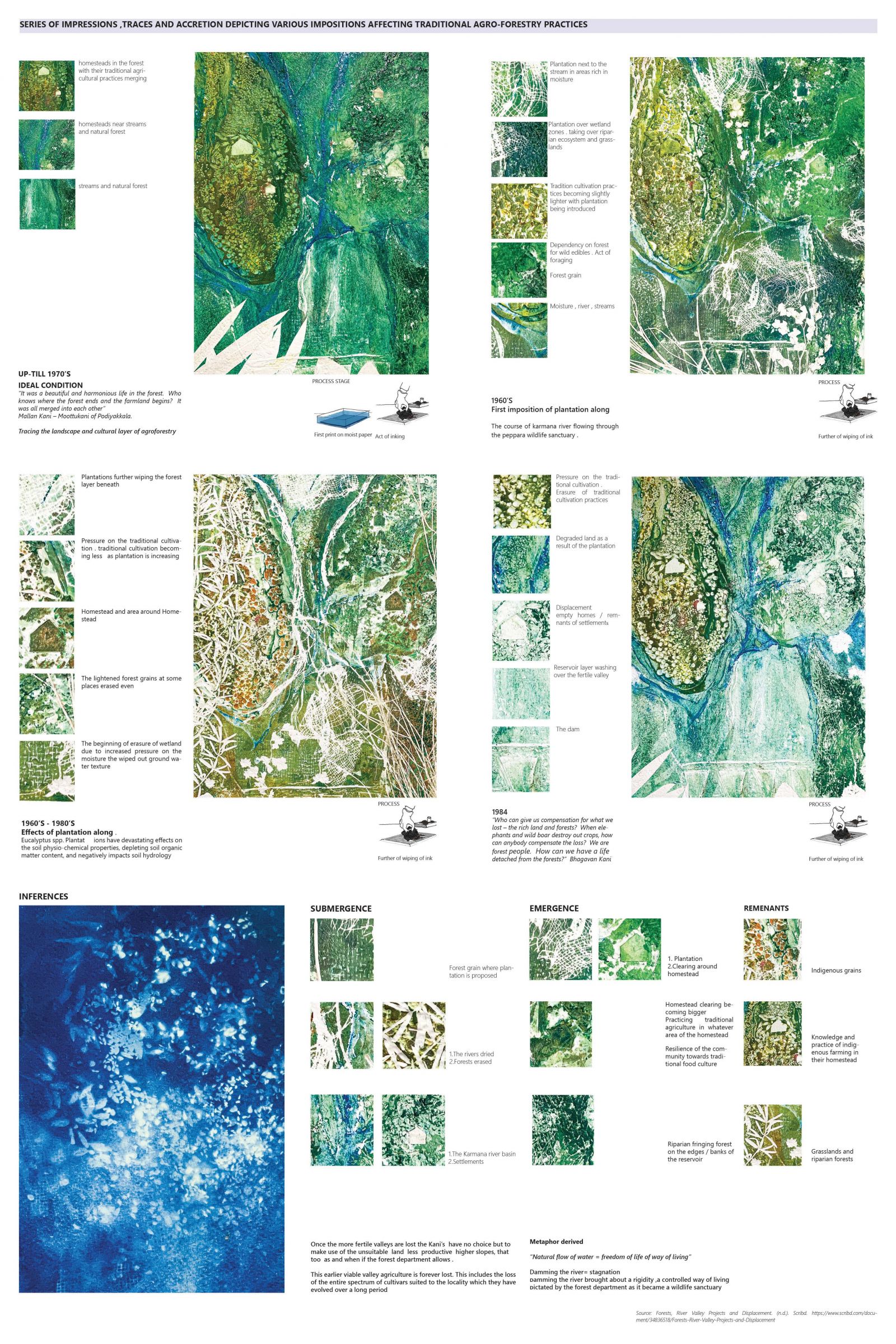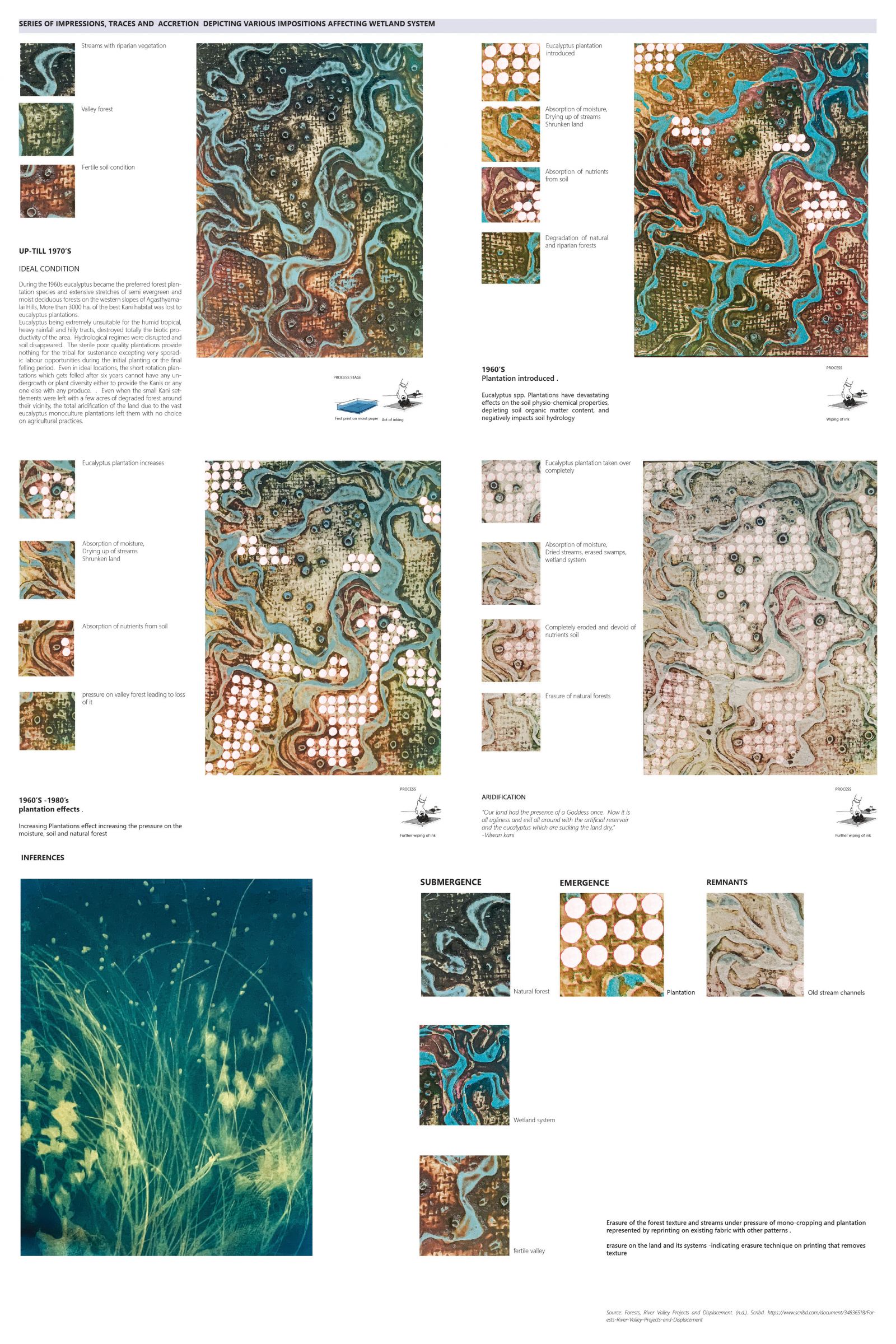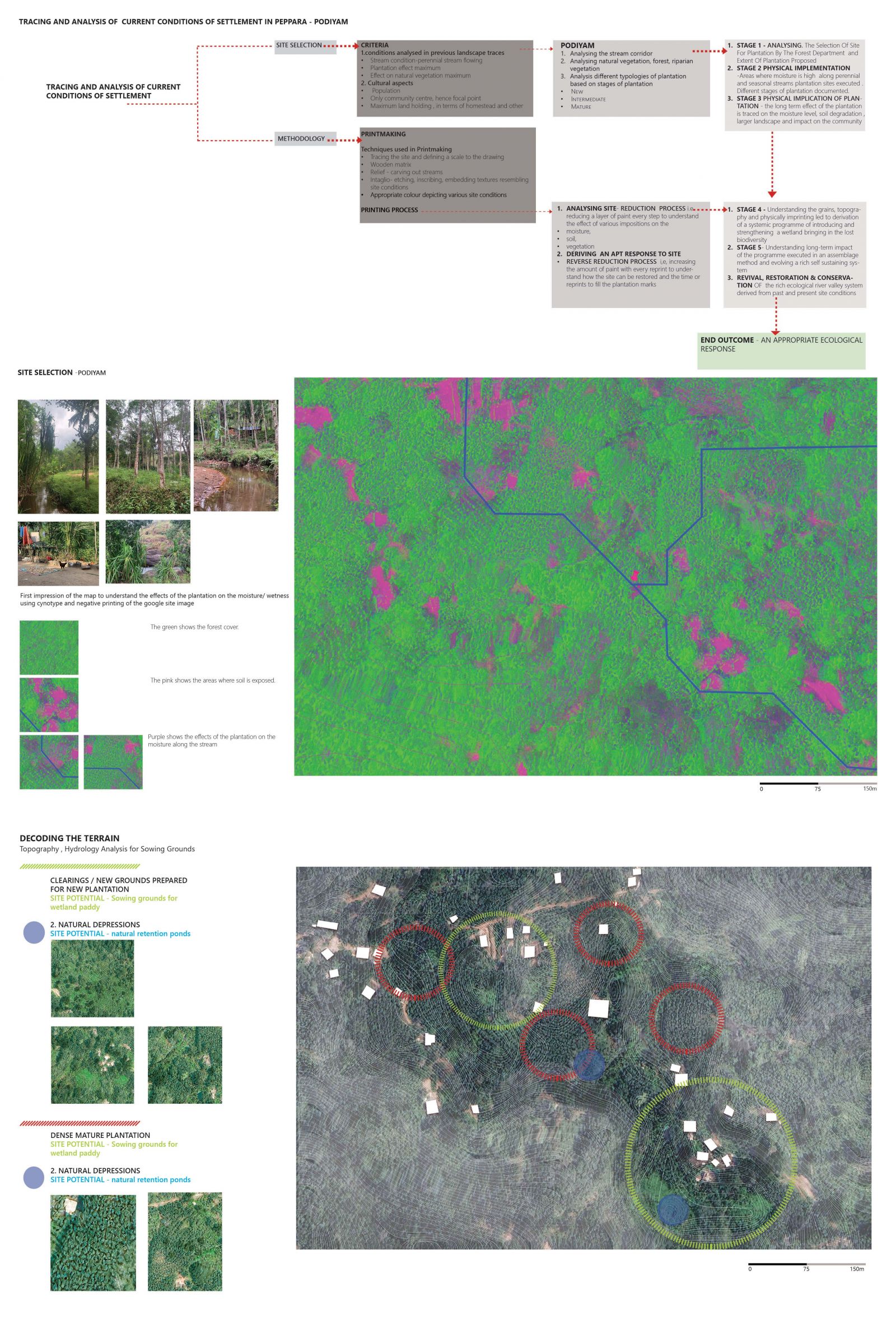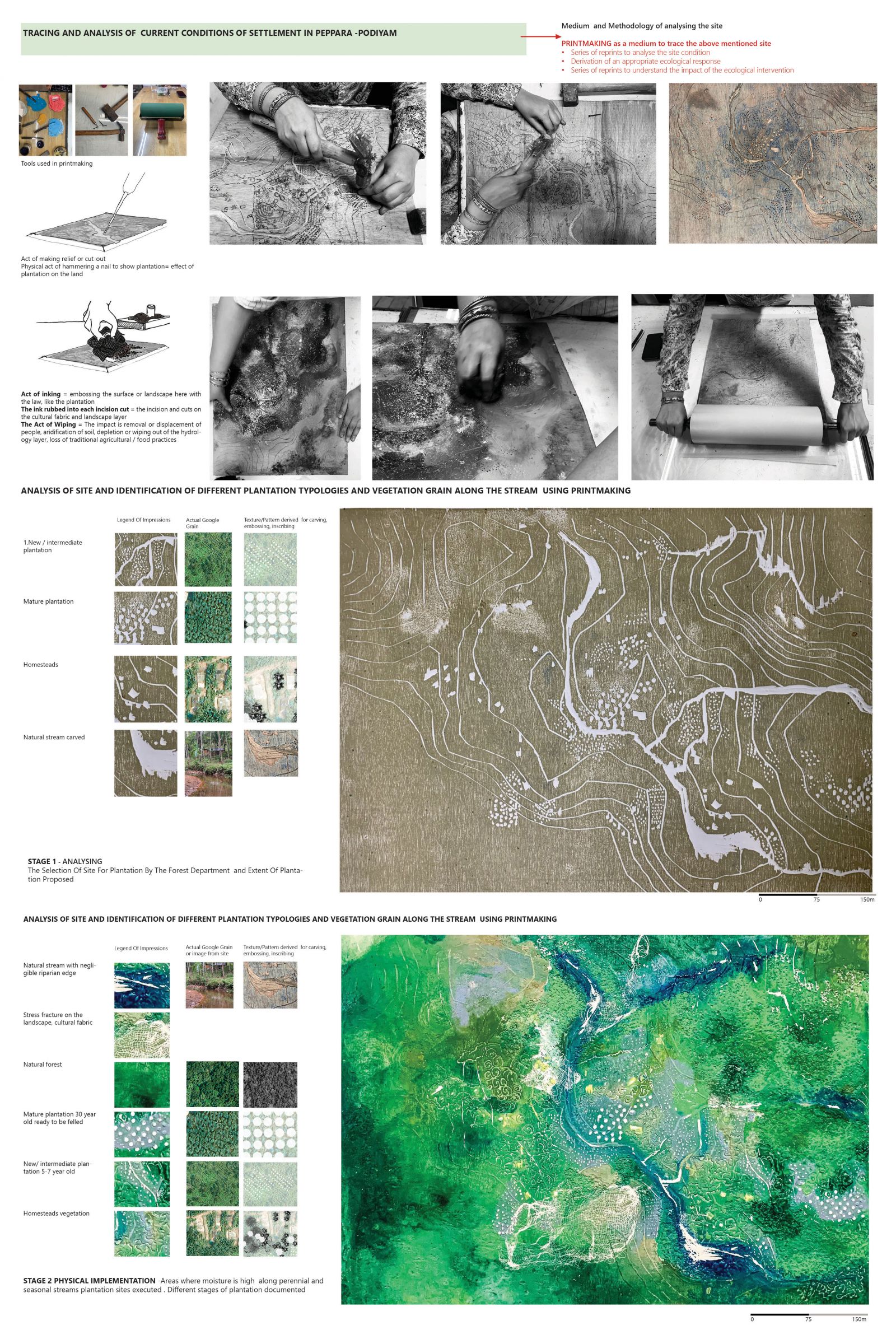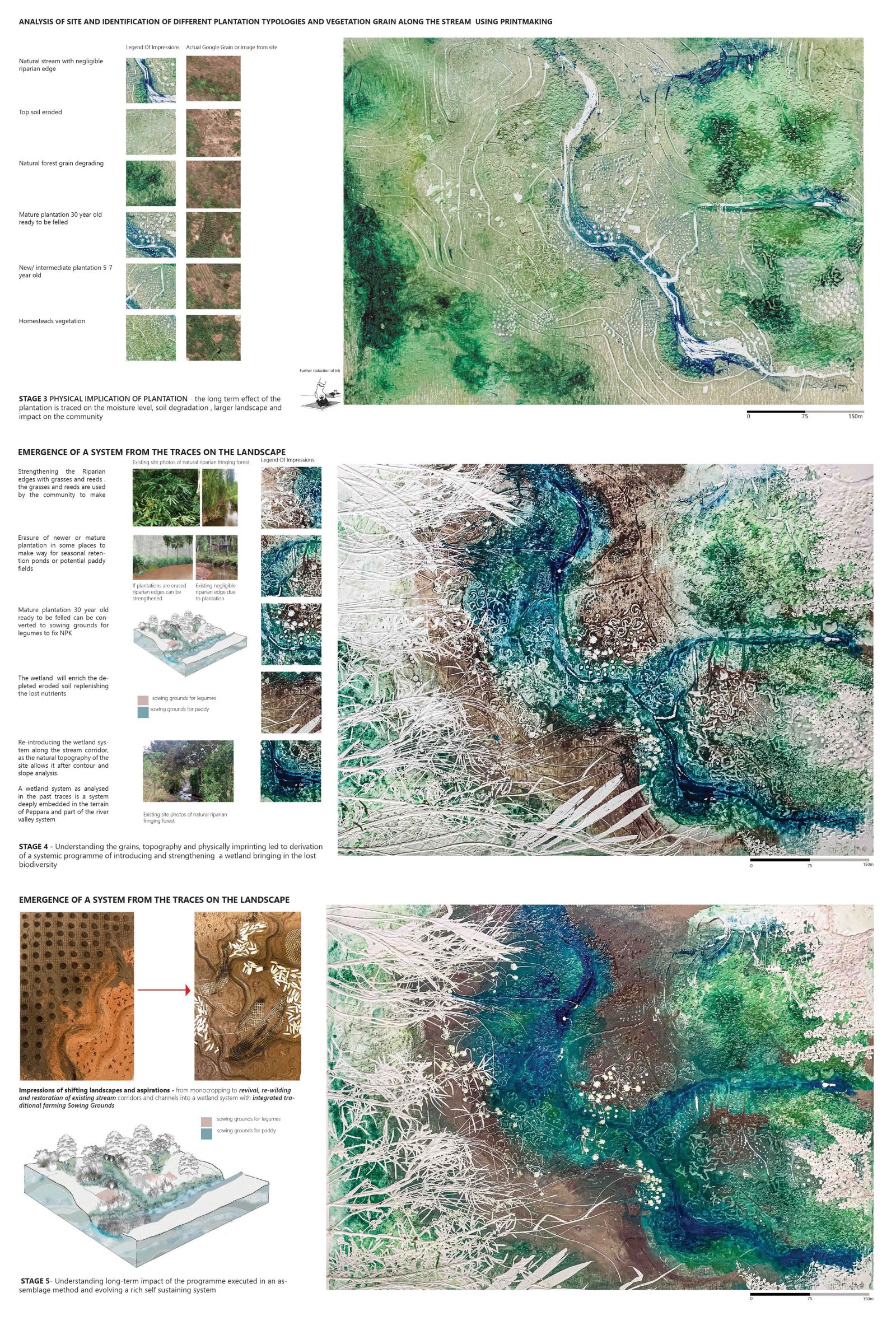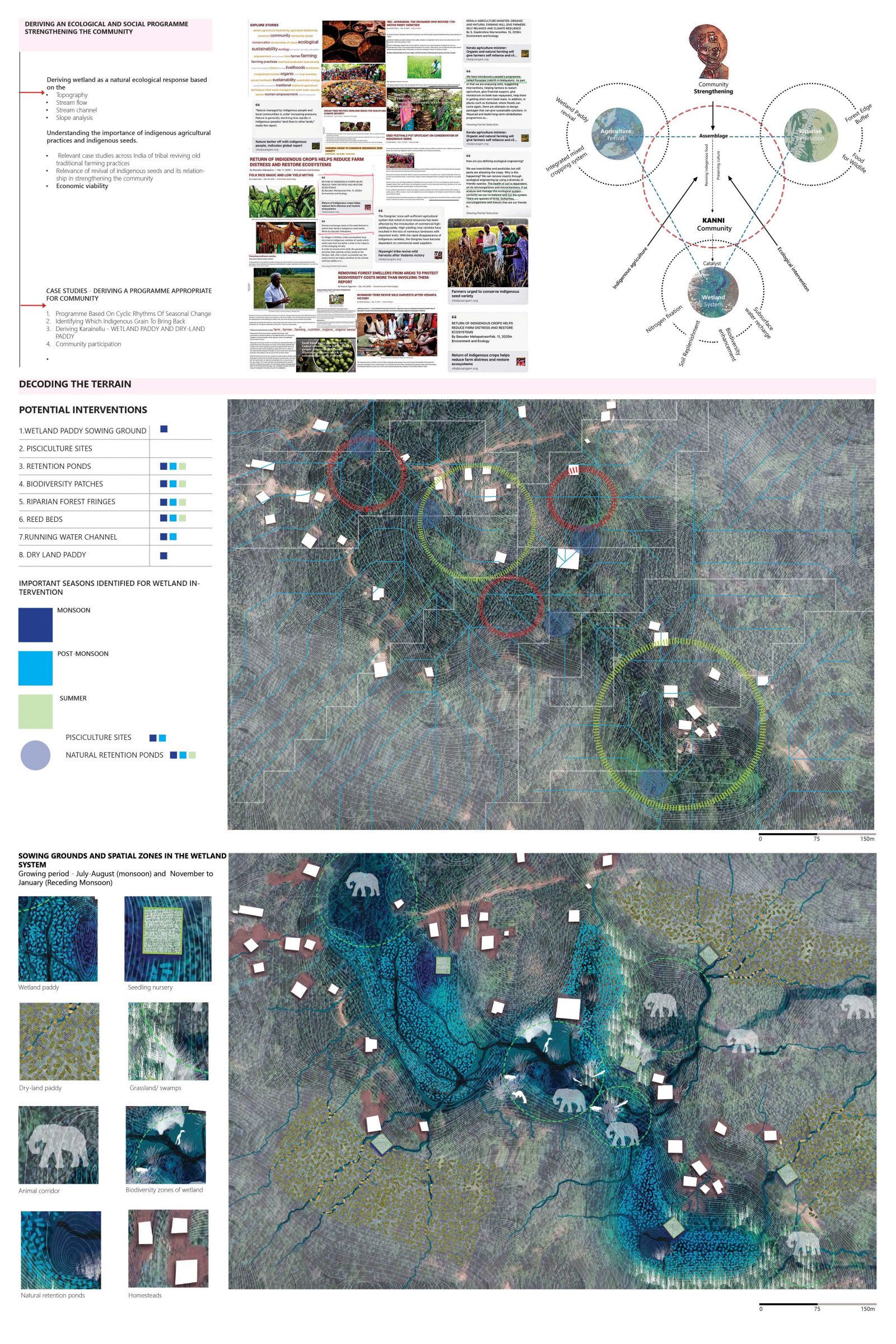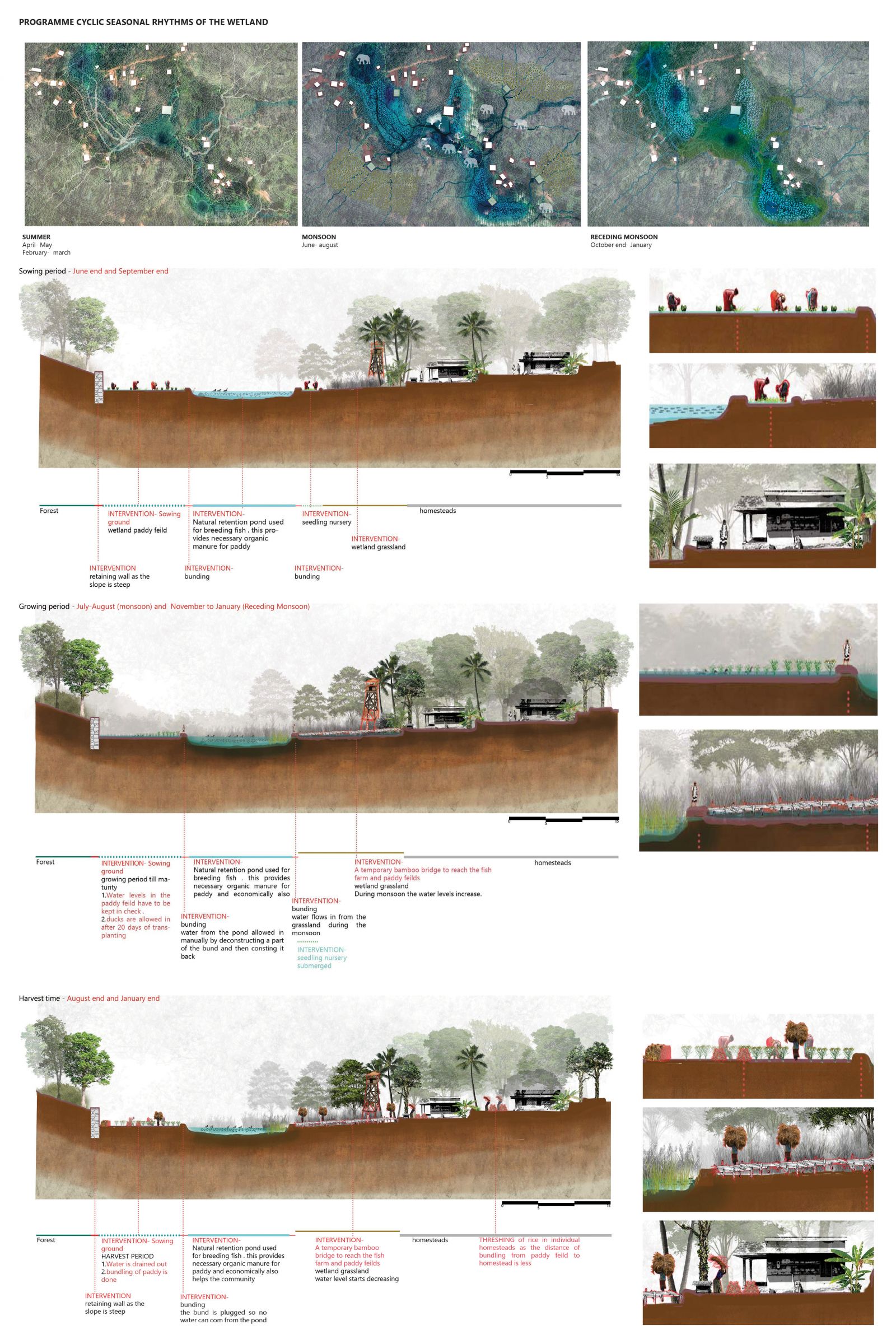- Student TOOR SIMRAN KAUR GURNEK SINGH
- Code PLA21347
- Faculty Architecture
- Unit L4 Studio Unit
- Tutor/s Divya Shah
- TA Sankalpa Patel
TRACING KARAINELLU-Revival of indigenous traditional practice of Karai- land nellu- paddy and Re-wilding and Restoration of wetland system
PROJECT VISION
The most intriguing factor I found about Kani’s, an indigenous community of tribal forest dwellers in Agastyamalai is that they reside in an area that is extremely rich in biodiversity.
The cultural knowledge system and skills of these communities are derived from their topography, which allows them to coexist within this diverse ecosystem in harmony.
They have long managed and protected their native biodiversity. The tribes seek refuge in the forest and eat wild edible plants, both raw and prepared. These aspects of existing within a forest for centuries have helped them foster a special bond with it.
A point of this system is their local cultivation practice which is derived mainly from their years of survival in it. Their ways of life are attuned to the cycles of the forest.
The project tries to understand the local cultivation practices of kairainell and the shift it has undergone over time. The shifting process is represented and interpreted as a series of imprints on landscape and its systems using an experimental medium of printmaking. The creative practices involved in crafting the imprints are then converted to analytical maps and spatial procedures.
PROGRAM The program has two aspects:
To bring back the indigenous agricultural practices of karainellu a system of wetland and dry-land paddy cultivation.
The second aim of the program is to strengthen the river valley system through a system of processes of natural restoration and re-wilding of wetlands.
